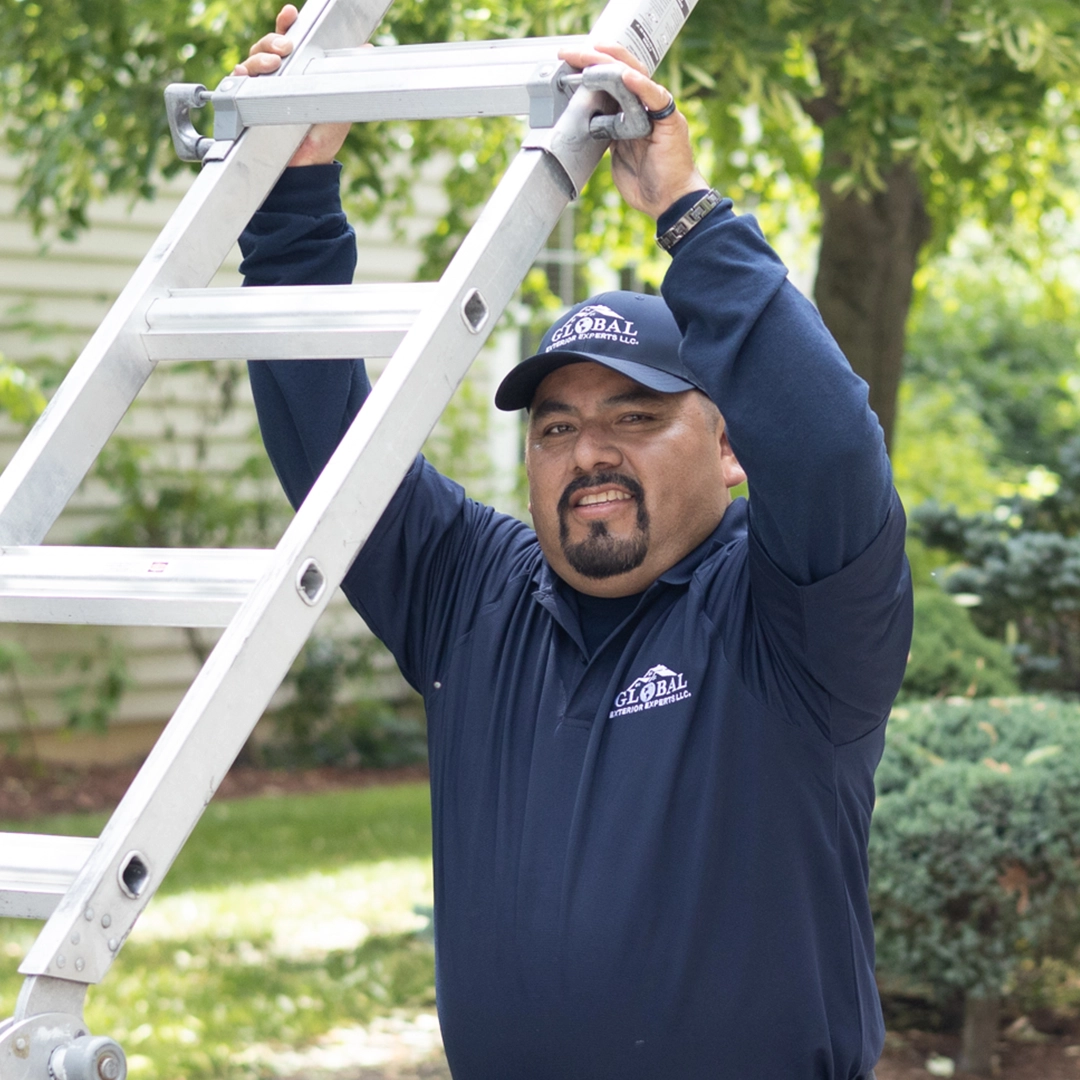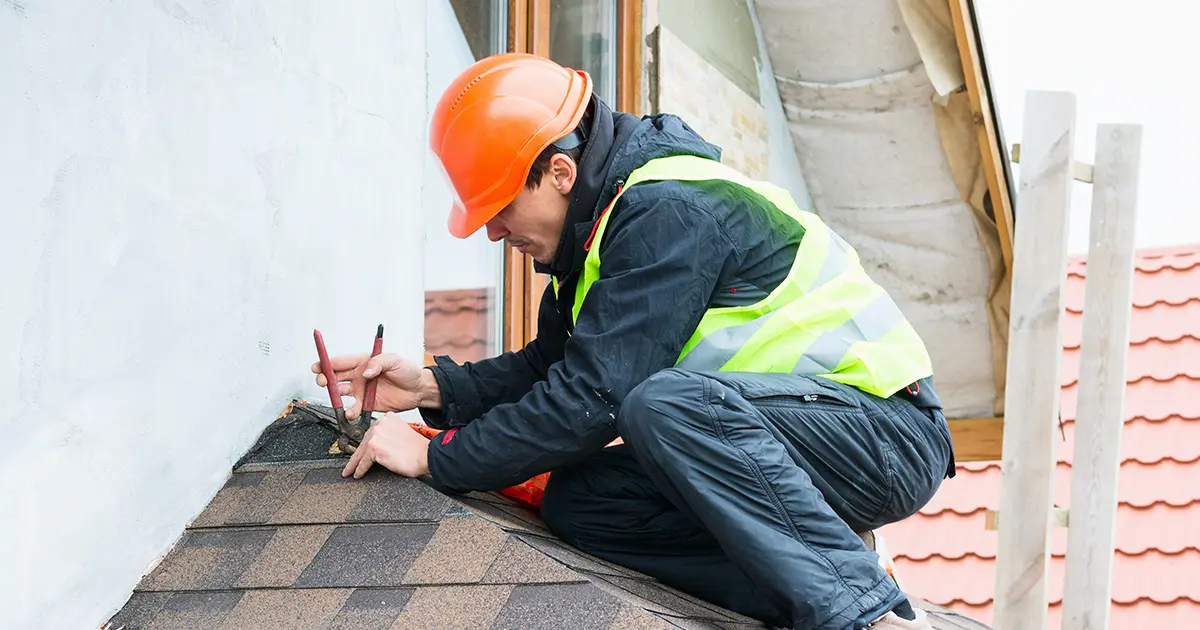5 Most Common Types of Roofs Used on Residential Homes

Intro
Choosing the right roof for your home can feel overwhelming, especially when so many options exist and you're unsure as to what the most common roof types are out there. It's a significant investment, and you want to make the best decision for your home and needs.
To simplify things, we'll provide you with the five most common roof types/materials, exploring their pros, cons, and when to consider them. By the end of this, you'll have a better understanding of what roof type is best for you and your home.
Explore and choose with confidence!

1. Asphalt Shingle Roofs
Asphalt shingles are one of the most popular type of roofing materials used on homes in America. They cover an estimated 80 percent of residential homes across the United States and can last 15-30 years. You can get asphalt shingles in several color/styles and they're one of the most affordable roofing options out there.
Pros:
- Budget-Friendly: Asphalt shingles are usually more affordable than other roofing types like slate, cedar shake and metal.
- Various Styles & Colors: When you choose asphalt shingles as your roofing material choice, it makes finding a color and style effortless from manufacturers like Owen's Corning.
- Easy Installation: If a roofing company has a large crew, installing an asphalt roof typically only takes one day!
Cons:
- Potential For Storm Damage: High winds, hail, and extreme temperature fluctuations can shorten an asphalt shingle's lifespan. Common types of storm damage on asphalt shingles are hail dents and missing shingles.
- Less Eco-Friendly: Asphalt shingles aren't the most recyclable option and can contribute to landfill waste.
When To Consider Asphalt Shingles:
Asphalt shingles are great if you're on a budget and seeking a reliable roof replacement option. They come in various colors and styles, making it easy to find an option that complements your home's exterior. Also, if you live in an area with a moderate climate without frequent extreme weather events, asphalt shingles offer a good balance of durability and affordability.

2. Metal Roofs
Did you know metal roofs have one of the highest ratings for hail resistance? A standing seam metal roof is an excellent option if you're looking for a roofing material that will add a modern touch to your home's exterior, while providing superior protection. You can even pair a metal roof with asphalt shingles, it looks amazing.
Pros:
- Great Longevity: Metal roofs can last 40 to 70 years, which is better than most other roofing materials.
- Energy Efficiency: Metal roofs are one of the most energy efficient roof materials. They Reflect solar heat, reducing cooling costs in hot climates.
- Durability: Withstand high winds, hail, and fire with proper installation.
- Variety: Metal roof materials are available in steel, aluminum, copper, zinc, metal blends, and more.
Cons:
- More Expensive: Metal roofs are more expensive than asphalt shingles.
- Noise Potential: Metal roofs can be noisy during heavy rain if the underlayment isn't adequate.
- Specialized Installation: Getting a metal roof installed requires experienced roofers.
When To Consider a Metal Roof:
A metal roof is an excellent choice if you're looking for a durable, energy-efficient and modern roofing material. If you want a roof that will outlast your typical asphalt shingles without the high cost of wood shake or natural slate, metal roofing is a great middle-ground option.

3. Slate Roofs
If you don't already know, natural slate is known for its durability and beautiful aesthetic. Slate roofs are available in a spectrum of colors like grays, blues, greens, and even reds. Also, did you know slate is found on some of the world's most iconic structures? Pretty cool! Slate can be costly, but the beauty of slate usually outweighs most of the cons.
Pros:
- Extreme Durability: Natural slate lasts 70 to 100 years and, if maintained properly, more than a century.
- Unmatched Beauty: A slate roof's natural texture is subtly rippled, and its colors can range from cool grays and blues to warm purples and reds.
- Fire and Rot Resistant: Unlike many roofing materials, slate won't burn or melt in a fire, providing superior protection.
Cons:
- Very Expensive: Slate is one of the most expensive roofing materials.
- Brittle: Natural slate can crack under heavy impact or if walked on improperly.
- Specialized Installation: You'll need highly skilled roofers for a slate roof installation.
When to Consider Slate:
Slate roofs are a great pick if you're a homeowner looking to make a statement and the cost isn't a concern. Nothing beats their classic looks and incredible lifespan. Slate is also fireproof, resistant to extreme weather, and adds significant value to your home.
Pro Tip: Make sure your home's structure can handle the weight of slate, since slate is by far the heaviest roofing material you can get installed.

4. Wood Shake Roofs
Wood shake roofs have a classic and natural beauty that works great for certain home styles. They come in different styles, like hand-split for a more natural look or resawn for a smoother finish. Cedar, redwood, and cypress are popular material choices for wood shake roofs. Also, unlike asphalt shingles, which all look the same, wood shakes have different grains and colors, giving your roof a distinct look.
If well maintained, wood shake roofs can last 40 to 50 years.
Pros:
- Natural Beauty: Cedar and redwood create a warm, textured look.
- Good Insulation: Wood offers natural insulation properties.
- Wind and Impact Resistance: High-quality wood shake roofs can withstand strong winds and resist damage from hail and falling debris.
- Environmentally Friendly: Wood is a renewable resource, and some wood shakes are made from recycled materials, which contributes to sustainability.
Cons:
- Maintenance: Wood shake requires regular treatments to resist rot and insects.
- Fire Risk: Cedar shake roofs can be highly flammable and may be restricted in certain areas. (check with your village before purchasing)
- Regional Suitability: Not the most ideal roofing material for very wet or humid climates.
- Higher Cost: Wood shake roofs are more expensive to install and maintain than other roofing options like asphalt shingles.
When to Consider Wood Shake:
If you have a Victorian, Colonial or farmhouse-styled home, a wood shake roof can boost your curb appeal significantly. If you're willing to invest in the beauty of wood shake, be prepared for the upkeep factor; you'll need annual roof inspections and treatments to prevent rot and pests. However, for many homeowners, the unique look and beauty of cedar outweigh the extra care and cost.
Pro Tip: Be sure to check with your village about restrictions, since some areas don't allow for wood-shake roofs.

5. Tile Roofs
You'll often see tile roofs in the Southwest, Florida, and coastal areas, but rarely in places like Illinois or the Midwest.
For starters, tile roofs come in various styles, including classic Spanish curves, sleek modern profiles, and even tiles that look like wood shake. They're available in multiple colors, such as natural terracotta to cool grays. Clay and concrete tile roofs can also easily last 50 years, if they're properly installed.
Pros:
- Durability: Clay or concrete roof tiles can last 50+ years.
- Ideal for Hot Climates: Their light color reflects heat.
- Unique Aesthetic: Tile roofs offer a beautiful textured appearance.
Cons:
- Weight: A roof structure that can support the weight of tile roofs is required.
- Cost: Tile roofs are more expensive than asphalt shingles and metal roofs.
- Fragility: Individual tiles can crack under impact.
When to Consider a Tile Roof:
Tile roofs are fantastic for long-term durability, especially in hot and sunny areas. Tile roofs give an authentic Mediterranean/Spanish vibe, which is perfect for those style homes. But keep in mind that tile roofs are heavy, so your house needs to be able to handle the weight. If cost isn't a big deal, tile roofs are a great choice that'll last decades (50+ years).

Conclusion
If you're looking for a type of roofing material that's a statement piece and durable, then slate, wood shake, or tile are good options to consider. Wood shake roofs can add significant curb appeal but require regular maintenance, while asphalt shingles require minimal upkeep and are the more affordable option.
Choosing the right type of roof for your home can be stressful. To simplify things, consider your style preferences, the local climate, budget, your home's architectural style, and how much maintenance you're comfortable with doing. We hope this gave you a good idea as to what the most common roof types are and what to choose. If you have any questions, feel-free to reach out to us!






